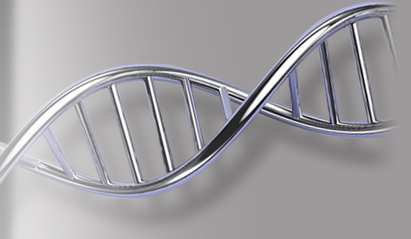Sequencher is not just the best sequence analysis program I have used; it is one of the best pieces of software I have used. Period. It is intuitive; it does exactly what I want it to do in pretty much the way I would expect it to work.
Testimonials
You are here
Sequencher contains a new feature that keeps track of protein and cDNA numbering in DNA assemblies. This ability greatly simplifies the task of comparing your experimental data to a genomic DNA reference when looking for mutations or other changes. This feature alone reinforces Sequencher as one of the premier tools for sequence analysis.
After using Sequencher for years as a grad student, I was forced to switch to MacVector as a postdoc in a new lab. Sequencher is so much easier to use than MacVector and has such a superior interface that I used the demo version of Sequencher for months rather than the lab copy of MacVector. Sequencher feels as though it is written by biologists that can write software, rather than programmers attempting to write biological software. Any life scientist who has spent time pulling their hair out over non-intuitive software will greatly appreciate this distinction.
I have been involved in DNA sequencing projects since I got my masters degree in bioinformatics in 2002. The programs I used for sequences analysis included Vector NTI from Invitrogen, PhredPhrap, Lasergene from DNAStar, and Sequencher. Sequencher is my favorite program not only because of its powerful SNP analysis functions but also because it is very easy to use and user friendly. I would like to recommend Sequencher to people who are doing SNP research projects and/or responsible for training students and colleagues who are going to do genotyping work.
I am very satisfied with how sequencher handles heterozygous calls in autosomal sequencing and potential heteroplasmies in mitochondrial resequencing. I found the forensics addon package for the general forensics community to be very helpful!
The most popular request I receive in the DNA core lab is: find the good clone among this group of 'candidate' minipreps. Alignment of ABI data files against a 'reference' sequence (template file) quickly eliminates defectives by showing not only base changes but the consequences to the protein translation.The second most popular request is: validate this new maxiprep so it can be given to ... or used for ... or expressed in ... Rapid assembly and editing of total plasmid sequence and then comparison to the reference file on record is all done in Sequencher.The third most popular request is: compare this library of (protein improvement) mutants and tell me which ones have protein changes. This is done by alignment in Sequencher and then formatting the Summary view to display the resulting changes in protein translation.For my own projects, I use Sequencher as a very general multiple-alignment sequence editor. Most recently, I've been using it to make comparisons of genes retrieved from the databases for cross-species cDNA cloning. Showing regions of homology at the protein level and then having the colinear DNA sequence presented in the same view (Summary window) helps find regions suitable for primer design. Turning on the Matching Bases/Residues as Dashes quickly shows regions of homology and divergence. I design primers to either or both depending on the project.
Thank you for sending the demo version of Sequencher. This seems to be wonderful software for phylogenetic and mutation studies. It clearly indicates start and stop codons in DNA sequences. Sequencher is easy to use and allowed us to quickly align sequences from various individuals. This software is very user friendly, and the instruction manual is very informative. The contig assembly tool is quite amazing in its speedy and time saving functions, which are the requirements for researchers in the biochemical field. I really got exited by running this software.
I just wanted to let you know how much the modifications to Sequencher have assisted in our data flow. The time saving has been amazing. Assembling our data has taken third the time it usually does, and has allowed for the smoothest assembly of our data for a vaccine selection that I can remember. Additionally noteworthy as we have produced more data for this selection than ever before. Please let your programmers know that the work that they have done has truly helped and thank them for their efforts.
Sequencher, from Gene Codes of Ann Arbor, Mich., is possibly today's most popular software for DNA Sequencing.
I am involved in resequencing projects for disease association studies. Sequencher was of tremendous help to me in these projects for- discovery of SNPs, detection of known SNPs, intronic/exonic SNPs & amino acid changing SNPs. I have been using it for sequence analysis of ABI data files since 2000. It is easy to operate and user friendly. It was a pleasure to be involved in the beta test program for version 4.6. What I liked in this new version is assembly function & variance table. Assemble to reference by defining assembly parameters using advance expression feature is very useful, it saves a lot of time and sequences can be assembled by defining feature of your choice e.g. sample ID, primer ID, or well position etc. Technical Support group at the Gene Codes Corporation has been very receptive to the idea of introducing variance table. With this feature it is now possible to export genotypes. Using this feature I am not only able to export whole table but also selected few columns using “export selected” option button.
Whether it has been for building contigs in the search for novel causative mutations, verifying proper vector construction, or simply aligning large numbers of samples for typing of a single SNP, it has been an invaluable tool. With the advent of next generation sequencing technologies, it becomes even more necessary to have trustworthy, user-friendly software.


